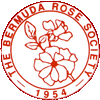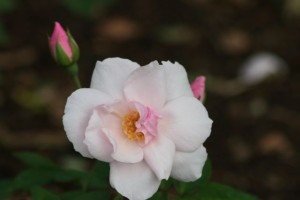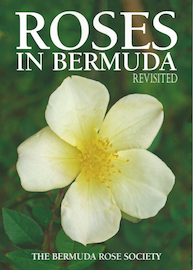Bermuda: A living museum of roses
The first mention of a rose in Bermuda is by a Spaniard who was shipwrecked in 1639. He described the garden that each house had and mentioned, among other plants and herbs, that there were many roses. This should not really surprise us, for roses were considered to be very important medicinally in past centuries. There were easily transported and ll parts of the plant were made into conserves, ointment, syrup or honey. The presence of roses was confirmed in the report of a witchcraft trial a few years later, although it was not explained why a rose was so important. In 1660 a ‘rose still’ was mentioned as part of someone’s effects. Nathaniel Tucker’s poem The Bermudian written in 1768, when he was a student at Edinbrugh, described his father’s ‘seat’:
“O’erspread with evergreens the garden pride
Promiscuous here appears the brushing rose.”
Thirty years later, in 1792, Daniel Wadsworth brought his sister to Bermuda from New England hoping to find a cure for her consumption, and noted in a letter to his father “…the Damask roses are in full bloom…” Even Tom Moore during his brief and much-documented visit to Bermuda in 1804 had time to write “…the rose are in full bloom here.”
The roses that were brought by the first settlers would have been R. galica officinalis (known as the Apothecary’s Rose), R. damascena (the Damask Rose), R. alba and R. centifolia, for it was not until the late 18th Century that the China roses were introduced into Europe and America.
There were probably many ways that roses might have reached Bermuda. The connections with America have always been strong and the journeyings frequent, but Bermuda ships sailed far and wide and it is possible that some roses were brought directly to the islands from China and the Far East. Both John Champneys and Phillipe Noisette lived in South Carolina in the early years of the 19th Century and Carolina has always been very accessible from Bermuda. Noisette roses probably would not be the first plants to come to Bermuda from the part of the American continent.
In 1829 Harriet Suzette Lloyd visited Bermuda for two years. She stayed with Archdeacon Spencer and his wife and described the flora and agriculture of Bermuda in some detail. This is what she had to say about the roses: “…with respect to the flowers there are here many whose bright tints charm the eye, but few which regale us with their perfume. There are no native roses, but several foreign varieties have been completely naturalised; such as sweet rose, and China cluster, but the multiflora, monthly and several others which twine round the porch and windows of the poorest hut, and bloom throughout the year, have but little scent.”
Governor Sir William Reid arrived in Bermuda in 1839. He took an enormous and beneficial interest in Bermuda’s agriculture and among his papers is to be found a catalogue from a plant nursery in Baltimore. It is intriguing that roses are listed as both “Roses” and “China Roses”. “Common damask”, “Dark damask” and “Cramoise, fine full blush” are a few of the roses mentined but the list under China Roses has a preamble about correct cultivation and that list includes “Sanguinea”, “French white Tea-scented”, “White musk cluster”, “Champney’s pink cluster” (sic), “Multiflora common (A climber)” and “White noisette”. The differentiation rather emphasises the interest there was at the time in what would have been considered new hybrids. Did Governor Reid bring any of these roses here? It is tempting to think so.
General Sir J.H. Lefroy, who arrived in 1871 as Governor, had an equally beneficial effect on Bermuda’s history and horticulture as his predecessor. He planted trees, shrubs, and flowers, many of which had never been imported here before. He listed many roses as growing by 1873, some in Government House garden: R. carolina (Pasture Rose), R. multiflora, R. borboniana (Bourbon Rose), R. odorata (Tea Rose), R. damascena (Damask Rose), R. laevigata (Wild rose) of which he said “Naturalised in Pembroke Marsh and in the Walsingham tract”, R. lutea (Austrian Brier) R. rubiginosa (Sweet Brier), and R. spinosissima. His final remarks read “The varieties cultivated in gardens are numerous, and embrace most of the common favourites; the flower is abundant, but from want of horticultural skill is rarely seen in high perfection. Many of the best species from England and America were introduced at Mount Langton (Government House) 1872-6. The Moss Rose (R. centifolia) does not succeed in Bermuda. White roses are in great profusion; as many as 2,000 blooms have been used in the Easter decoration of Trinity Church alone.”
So we see that roses have indeed always been a part of Bermuda’s history, but it was not until 1954 that a group of interested and knowledgable people came together to found the Bermuda Rose Society. The main objectives have not changed and they are:
- To encourage the cultivation and love of roses in Bermuda;
- To conserve the old -fashioned roses that have stood the test of time in these Islands, and to import other roses in classes that have proved suitable to our climate and soil conditions;
- To investigate suitable understocks for budding and/or grafting roses, and other future developments in rose growing that may arise from time to time.


